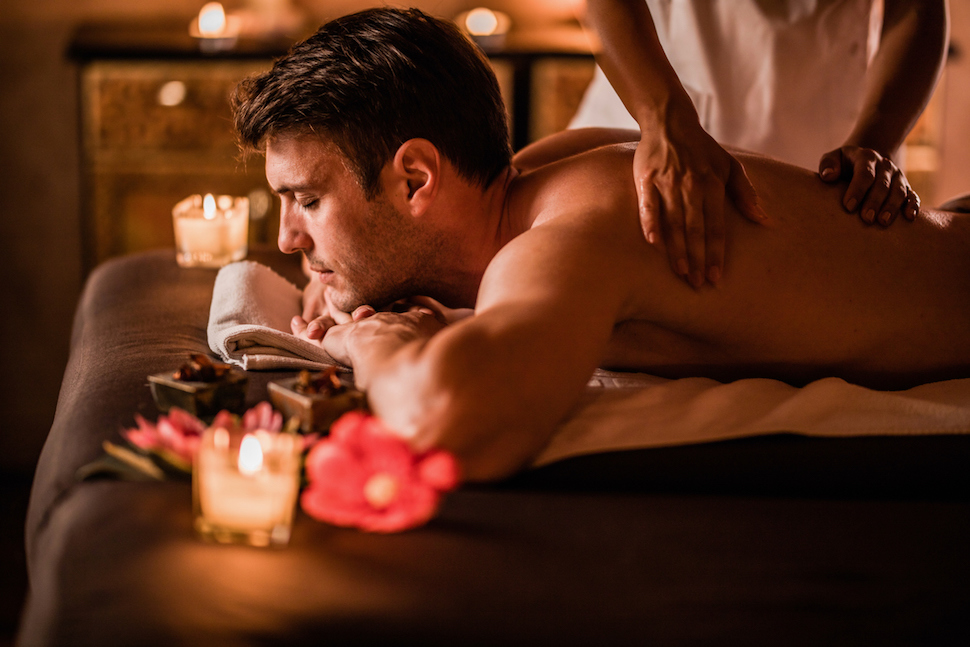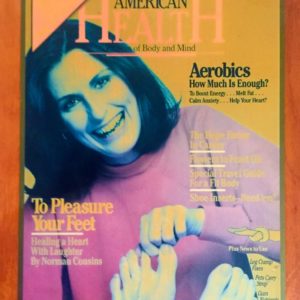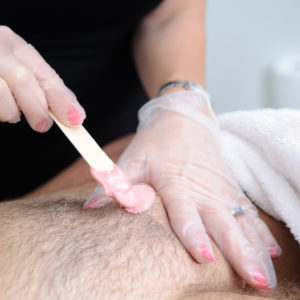
In 2019, the International Association (ISPA) reported that men now constitute 49 percent of spa-goers, and the Wall Street Journal reported that women in urban centers are noticing an unexpected obstacle at the salon: Lines of men getting pedicures! This is good news for Mugs everywhere, but also long overdue.
In 1983, I had my first pedicure as part of a cover-story called “To Pleasure Your Feet” for a magazine called American Health. Psychologist Daniel Goleman, PhD, who popularized Emotional Intelligence and then mindfulness, wrote the feature about all the great things one can do for feet—from massage to pedicures to reflexology—and why they can make you feel so good all over (the feet are so packed with nerves that some can use them to play the piano).

The author’s feet grace the cover of a 1983 award-winning issue of American Health magazine.
The art directors then had the staff get barefoot, and they chose me to go to Bloomingdales to prepare for the photo shoot. Strange looks and giggles greeted me at the salon; my therapist had never given a man a pedicure; and I had no clue what I had been signed up for. Nevertheless, it felt wonderful and the magazine with my pampered toes on the cover turned out to be our bestseller on the way to a National Magazine Award.
Back then, I thought men’s pedicures would the next big thing. Manicures and facials, too.
Why? Because hands, feet, and faces are where the nerves are—the primary source of what are called somatosensory projections. To put it another way, if you’re going to light someone up, it helps to be near the switch. (This was long before manscaping was a popular concept, let alone a word.)
Nowadays, the Wall Street Journal reports that men still get funny looks in salons, but pleasure is clearly winning. The tectonic public shift is attributed to 2017, when LeBron James and then the entire NBA fessed up to pedicure pleasures. Supposedly 90 percent of the NBA get pedicures, and the simple reason is that people with multimillion-dollar feet figure out what’s good for them—and just do it. At the exclusive Golden Door Men’s Week, Fortune 500 CEO’s compare facials and enjoy having the Golden Door painted on their toes. Times have changed. And all of this raises the possibility that 2020 may the year that women and men finally achieve parity in spa-going.
Where Brazilians Meet Egyptians

Photography by VM Jones
The news also points to a trend that’s more profound: The end of the gender gap in treatments. For example, the Sugar Plum chain in the Seattle area offers hair removal services in the most sensitive places for “every-BODY.” Super-conscientious on all levels, Sugar Plum’s mission is to “empower our employees with living wage careers and benefits . . . in a supportive work environment including ample education and training with a nurturing community . . . using services and products that are kind to the planet and to the skin.” The Sugar Plum website FAQ’s also provide a glimpse into refreshing new sensibilities for dealing with potentially embarrassingly intimate issues:
“We know that most men fear getting an erection during an Egyptian. We can assure you, that while erections are natural and do occur, they usually don’t last after the service has started. If you do get an erection, please be assured that our staff are professionals and will not judge or belittle you.” (The therapist will wait for it to go away.)
The rapidly closing gender gap is huge for the spa industry, but also points to the closing of a gap that’s visceral for any living Mug: What one might call the “urnings” gap, those extra years men spend in the urn (or cast to the wind or sealed in a coffin) while his wife collects his social security. Roughly 5 million American women currently collect on husbands who have been, for one reason or another, untimely stiffed.
Seriously, the longevity gap turns out to be no more natural than the spa gap or the gap in pay. For example, over most of the last 100 years, as much as 75 percent of the longevity gap was the result of smoking—an addiction that men picked up much earlier than women. When women adopted the lethal habit as a symbol of emancipation, the longevity gap shrank. Similarly, as men have tiptoed into pedicures, manicures, facials, and Egyptians, and women have leaped into heavy drinking, high stress jobs, over-caffeination, and drugs—the longevity gap shrank even more. By 2032, both the longevity gap and the pay gap may well be gone, and we can celebrate at the spa—going Dutch.
Stephen Kiesling
Stephen Kiesling is a writer and editor whose career was launched in 1982 with the classic rowing book The Shell Game and The New York Times Book Review, “Just as it is good that there was a riverboat pilot who could write…it is good that there is one true blue jock who can.” A Scholar of the House in philosophy at Yale, Stephen was a 1980 Olympic oarsman who also raced in the 2008 Olympic Trials. He learned journalism from T George Harris, a decorated World War II artillery scout and Time reporter who created Psychology Today. T George and Stephen launched both American Health magazine and Spirituality & Health, where Stephen continues as Editor at Large. He has written for the New Yorker, Sports Illustrated and Outside, was a spokesman for Nike, started a celebrated rowing club, and has built parks and playgrounds. He lives at Ti’lomikh Falls on the Rogue River in southern Oregon, where he writes for his wife Mary Bemis at Insidersguidetospas.com. Stephen is also the caretaker of one of America’s oldest Salmon Ceremonies and is working on a whitewater park and sculpture garden. He is interested in transformational retreats, anything to do with water, the Native American origins of our democracy, and the process of becoming what he calls an Earth-Indigenous Elder, a person who knows their own story from the beginning of time.